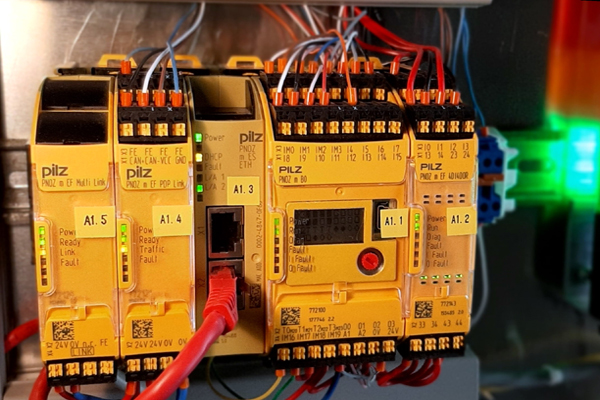Lectures:
1. Internal power distribution of electricity - the main house management, lighting, socket and technological installations.
2. Electrical equipment and dedicated in special facilities (showers, swimming pools, saunas, caravans, etc.)
3. Specification of external influences, the degree of coverage for different environments, proper design of electrical installations by requirements of external influences.
4. Arrangements for the laying of electrical power lines. Electrical equipment - switches, sockets, switchboards, cables, etc. The requirements for lead of communication and information technologies.
5. Design and installation of electrical power distribution in industrial premises, installed power factor performance, level of electricity supply.
6. Design of artificial indoor lighting, basic concepts, lamps, lighting calculation strategies.
7. Outdoor lighting, basic concepts, lamps, lighting calculations
8. Basic requirements for the installation of regulatory and signaling devices.
9. Electronic Fire Systems (EFS). Electronic Security Systems (ESS).
10. Vertical and horizontal transport in buildings and homes. Motor installation.
11. LV connection management and free cable connections, location and involvement of measuring kits. Types of payments for electricity energy.
12. Grounding of electrical instalations and lightning protection systems.
13. Protection system against atmospheric discharge and other kinds of distress.
Projects:
Each student will work on two semester projects.
1. Project documentation of electric installation in a building.
2. Project documentation of electric installation in a technological object.
Students may have assigned larger project together, to solve it in cooperation, with the specification of parts for individual students, to encourage students to concerted teamwork.
Laboratory exercise:
1. Measurement of groounding resistance.
2. Soil aggressivity, soil resistivity and ground currents.
3. Electrical instalation for lightning.
4. Testing of electrical appliances and electrical instalations.
Theoretical exercise:
5. Introduction, graduation requirements, basic orientation in the technical standardization.
6. The assignment of semester projects.
7. Working with electronic catalogs, sizing of cable lines, electronic scale in the motor terminals, the proposal regulated power.
8. The basics of working with the Proficad program.
9. Advanced functions of the Proficad program, exports, imports.
10. Design of lighting systems and power distribution systems.
11. Creating of technical report.
12. Presentation of semester project n.1.
13. Presentation of semester project n.2.
1. Internal power distribution of electricity - the main house management, lighting, socket and technological installations.
2. Electrical equipment and dedicated in special facilities (showers, swimming pools, saunas, caravans, etc.)
3. Specification of external influences, the degree of coverage for different environments, proper design of electrical installations by requirements of external influences.
4. Arrangements for the laying of electrical power lines. Electrical equipment - switches, sockets, switchboards, cables, etc. The requirements for lead of communication and information technologies.
5. Design and installation of electrical power distribution in industrial premises, installed power factor performance, level of electricity supply.
6. Design of artificial indoor lighting, basic concepts, lamps, lighting calculation strategies.
7. Outdoor lighting, basic concepts, lamps, lighting calculations
8. Basic requirements for the installation of regulatory and signaling devices.
9. Electronic Fire Systems (EFS). Electronic Security Systems (ESS).
10. Vertical and horizontal transport in buildings and homes. Motor installation.
11. LV connection management and free cable connections, location and involvement of measuring kits. Types of payments for electricity energy.
12. Grounding of electrical instalations and lightning protection systems.
13. Protection system against atmospheric discharge and other kinds of distress.
Projects:
Each student will work on two semester projects.
1. Project documentation of electric installation in a building.
2. Project documentation of electric installation in a technological object.
Students may have assigned larger project together, to solve it in cooperation, with the specification of parts for individual students, to encourage students to concerted teamwork.
Laboratory exercise:
1. Measurement of groounding resistance.
2. Soil aggressivity, soil resistivity and ground currents.
3. Electrical instalation for lightning.
4. Testing of electrical appliances and electrical instalations.
Theoretical exercise:
5. Introduction, graduation requirements, basic orientation in the technical standardization.
6. The assignment of semester projects.
7. Working with electronic catalogs, sizing of cable lines, electronic scale in the motor terminals, the proposal regulated power.
8. The basics of working with the Proficad program.
9. Advanced functions of the Proficad program, exports, imports.
10. Design of lighting systems and power distribution systems.
11. Creating of technical report.
12. Presentation of semester project n.1.
13. Presentation of semester project n.2.
